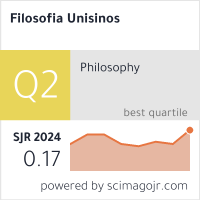On the “Idol of the Mind”: Edmund Husserl and Paul Valéry
DOI:
https://doi.org/10.4013/fsu.2016.171.02Resumen
This article analyses some less explored structural parts of the phenomenological method as it was construed by Husserl in order to validate a twofold thesis. First, the application of phenomenological notions such as the neutrality modification, the distinction between the positional, transcendental, and imaginative ego, body-consciousness, etc. stimulates the deconstruction of a “spiritual” quest in any traditional and/or modern sense. On the other hand, this approach offers some new possibilities for the quest for “transcendental absolution” which is illustrated here by Valéry’s creative approach. Husserl’s and Valéry’s distinct but complementary projects represent several major intellectual shifts in early contemporary Western philosophy and literature.
Keywords: Edmund Husserl, Paul Valéry, phenomenology, consciousness, pain.
Descargas
Métricas
Descargas
Publicado
Cómo citar
Número
Sección
Licencia
Concedo a revista Filosofia Unisinos – Unisinos Journal of Philosophy o direito de primeira publicação da versão revisada do meu artigo, licenciado sob a Licença Creative Commons Attribution 4.0 (que permite o compartilhamento do trabalho com reconhecimento da autoria e publicação inicial nesta revista).
Afirmo ainda que meu artigo não está sendo submetido a outra publicação e não foi publicado na íntegra em outro periódico e assumo total responsabilidade por sua originalidade, podendo incidir sobre mim eventuais encargos decorrentes de reivindicação, por parte de terceiros, em relação à autoria do mesmo.










